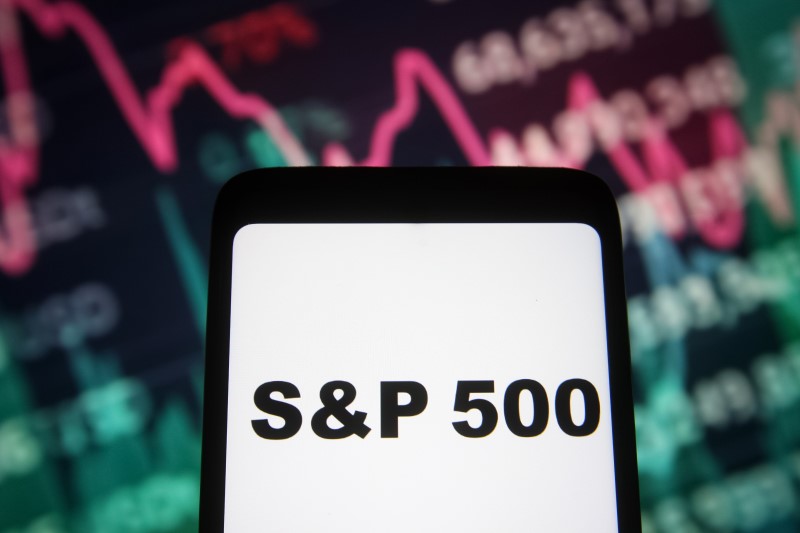By Lewis Krauskopf
NEW YORK (Reuters) -The rally that has taken U.S. stocks to an all-time high is expected to have another powerful driver in 2024: companies buying back more of their own shares.
Stock buybacks are projected to increase this year after ebbing in 2023, fueled by forecasts of stronger corporate earnings that are expected to leave companies with excess cash. The total amount of buybacks could rise to $1 trillion on an annualized basis, Deutsche Bank said.
companies are expected to increase earnings by 10% in 2024 after a 3% rise in 2023, according to LSEG data. Buybacks, in turn, are seen rising by at least 4% this year, according to Goldman Sachs. The bank estimates they fell by 15% in 2023.
“The fact that now we have earnings growth that clearly bottomed in 2023, interest rates that have declined from their peaks and improving economic sentiment all point to an increase in buybacks going forward,” said Ben Snider, an equity strategist at Goldman Sachs.
A likely increase in corporate demand for stock “should be supportive for equity valuations and for share prices,” he said.
Corporate buybacks can help stock performance in several ways. By reducing the number of shares outstanding, buybacks make earnings and other per-share metrics that are commonly used in valuing equities look more robust.
Greater corporate demand for stock also can push up prices, while companies repurchasing shares when stock prices decline allows buybacks to buffer against more extreme volatility, according to Goldman’s Snider.
Higher earnings should leave companies able to spend on buybacks even after outlays for key items such as capital expenditures and paying down debt, Deutsche Bank’s strategists wrote in a recent report.
“If earnings continue to be robust, buybacks and buyback announcements should also start to pick up and will be an important driver for equities,” the Deutsche Bank strategists said.
The S&P 500 is up over 2% in 2024 and stands near record highs, after rising 24% last year.
In the past few weeks, Wells Fargo said it expects to repurchase more shares in 2024 than last year, homebuilder Lennar (NYSE:) increased its share buyback plan by up to $5 billion, while defense contractor Northrop Grumman (NYSE:) said it planned at least $2 billion in repurchases in 2024.
Stock buybacks by Bank of America corporate clients have been above seasonal levels for 11 straight weeks, the firm’s analysts said in a note earlier this week.
SIGNALING TO INVESTORS
Grace Lee, senior portfolio manager at Columbia Threadneedle Investments, said defense and aerospace company RTX’s October announcement that it would repurchase $10 billion of its shares, even as the company faced a major issue with its aerospace engines, sent a “very strong signal” that helped convince her to stick with the stock. RTX shares are up about 13% in the past three months.
In general, buybacks are “really about the company signaling to investors on what they think of their stock,” Lee said. “We have got to trust that management is doing the right thing by implementing buybacks as opposed to looking for other ways to deploy their capital.”
Of course, buybacks are one of several factors investors are looking at as they assess the trajectory of stocks. Cooling inflation and resilient growth have boosted the case for a so-called economic soft landing that has whetted market participants’ appetite for stocks.
Expectations that the Federal Reserve will soon begin lowering interest rates have also encouraged investors, though Chairman Jerome Powell on Wednesday said a widely anticipated March cut was unlikely.
At the same time, some investors are less convinced that corporate executives will embark on a buyback spree this year.
Jason Pride, chief of investment strategy and research at Glenmede, said the combination of record high stock prices, more expensive valuations and still-high interest rates could make companies think twice about buybacks.
The S&P 500 is trading at a forward price-to-earnings ratio of 20 times, well above its long term average of 15.7 times, according to LSEG Datastream.
“The financing logic would tell you that 2024 is a year in which you are less incentivized to do buybacks than 2023, because of higher stock prices and higher interest rate costs,” Pride said.
Read the full article here








